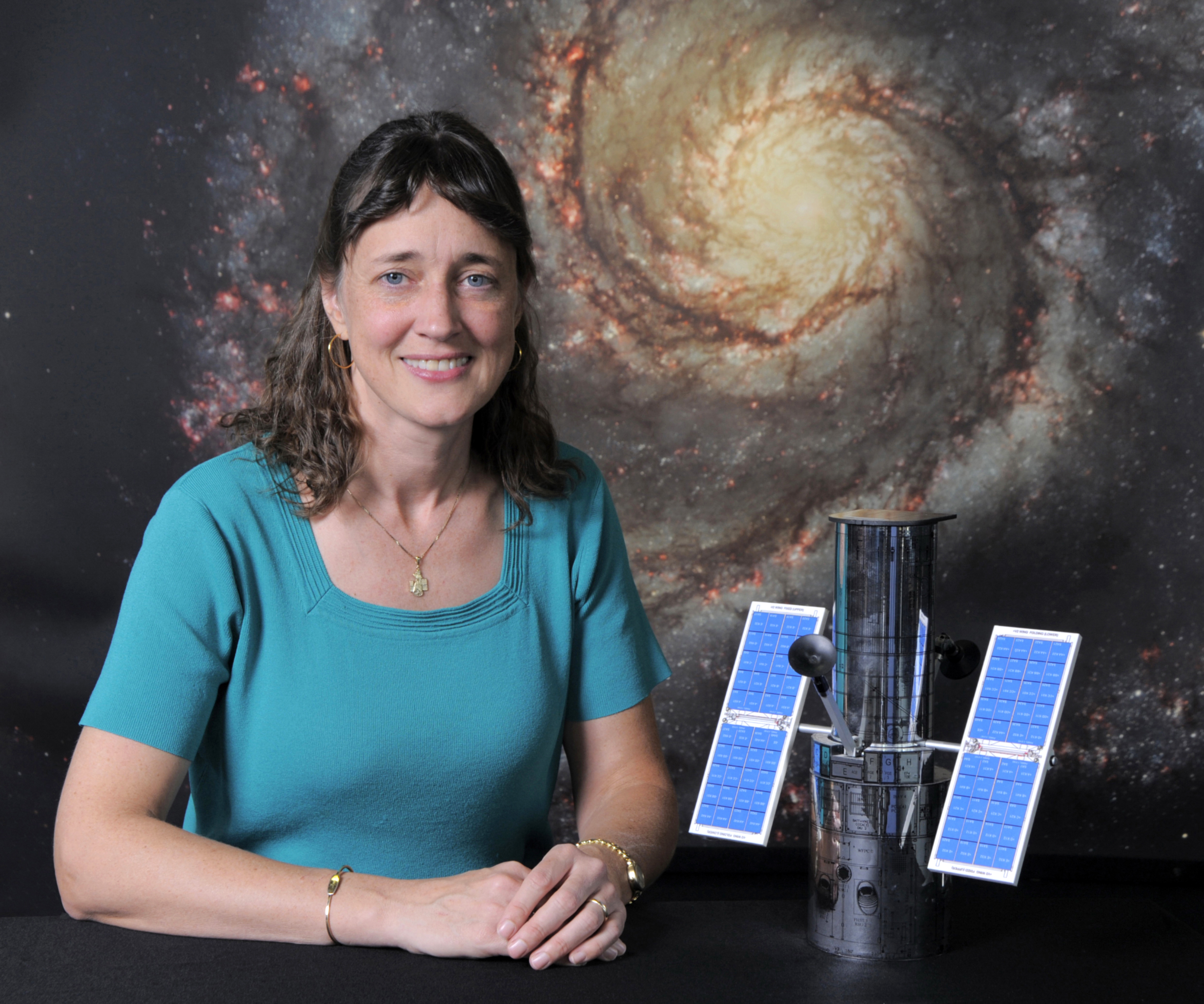WASHINGTON, April 24, 2020 — The American Institute of Physics (AIP) is delighted to host a virtual lecture by Hubble Space Telescope senior project scientist Jennifer Wiseman in an upcoming Lyne Starling Trimble Science Heritage public lecture to celebrate the 30th anniversary of the launch of the NASA/ESA Hubble Space Telescope.
The lecture series is hosted by AIP and highlights experts who study the role of science and technology throughout human history and modern society. “The Hubble Space Telescope: 30 Years of Discovery and Awe” will be hosted virtually, April 29 at 3:30 p.m. Eastern (U.S.). Interested viewers can register for the lecture here.
In her role at NASA, Wiseman works to promote maximum scientific return from the Hubble Space Telescope mission.
“This would be extremely daunting, except that I have the great blessing of working with a large team of very talented engineers, scientists and managers at NASA and at the Space Telescope Science Institute,” said Wiseman. “By facilitating this team, the mission flourishes.”
Wiseman is passionate about public scientific outreach as well as science policy and has given numerous talks about scientific discovery and advancement with major news outlets, such as the New York Times, the Washington Post, the BBC, NOVA and National Public Radio.
“The anniversary of Hubble is a joyful and gratifying milestone to me,” Wiseman said. “It signifies that people around the world can agree that curiosity and investigation of the universe is worthwhile. It signifies that engineers, scientists, astronauts, educators, communicators, managers, civic leaders, and the public can cooperate and blend their skills and support for a mission like this, enabling it to succeed and to be sustained and enhanced for decades. And it signifies that challenges, problems and roadblocks — such as Hubble has faced many times during its mission — can be met and overcome.”
The Hubble Space Telescope was launched April 24, 1990. Designed to give scientists the opportunity to observe the universe and its mysteries with new clarity, it was carried into low Earth orbit by the space shuttle Discovery.
Since its deployment, Hubble has measured the expansion rate of the universe, imaged galaxies that are billions of light-years away and detected the effects of mysterious dark energy and dark matter. It has also showcased the dynamic activity and beauty in our own solar system.
Physics Today, a publication by AIP, is highlighting the anniversary in its April issue with a look back at the history of the telescope and analysis of Hubble’s discoveries over the past 30 years. A centerfold in the print edition pinpoints the locations of Hubble’s observations on a map of the sky and highlight the telescope’s great discoveries and images.
This same map is available online as part of Physics Today’s interactive presentation on Hubble. In addition, online articles chronicles Hubble’s first few years in orbit, when a misshapen mirror blurred its vision, and break down the astronomical objects the telescope has observed.
“Hubble’s iconic images are loved by people around the world, and I’m pleased that these treasured views of our magnificent universe inspire curiosity, scientific study, art, music, philosophy, theology, poetry, reflection and much more,” said Wiseman.
Wiseman noted the future of the Hubble Space Telescope looks as promising as its past. She expects the unique ultraviolet and visible-light capabilities of Hubble to complement the infrared-light capabilities of the upcoming James Webb Space Telescope.
The Trimble lectures are funded by Virginia Trimble, an accomplished astronomer and advocate of the history of physics to students, colleagues and the general public, and named after her father, Lyne Starling Trimble, who held patents for a number of color-reproduction systems and was an innovative chemist.
###
“The Hubble Space Telescope: 30 Years of Discovery and Awe,” by Jennifer Wiseman, will be hosted virtually April 29, 2020. Register for the lecture here. More information about the Lyne Starling Trimble Science Heritage Public Lecture Series can be found at https://www.aip.org/history-programs/physics-history/trimble-lectures.
About the American Institute of Physics
The American Institute of Physics (AIP) is a 501(c)(3) membership corporation of scientific societies. AIP pursues its mission—to advance, promote, and serve the physical sciences for the benefit of humanity—with a unifying voice of strength from diversity. In its role as a federation, AIP advances the success of its Member Societies by providing the means to pool, coordinate, and leverage their diverse expertise and contributions in pursuit of a shared goal of advancing the physical sciences in the research enterprise, in the economy, in education, and in society. In its role as an institute, AIP operates as a center of excellence using policy analysis, social science, and historical research to promote future progress in the physical sciences. See https://www.aip.org/.
###
Original post https://alertarticles.info
